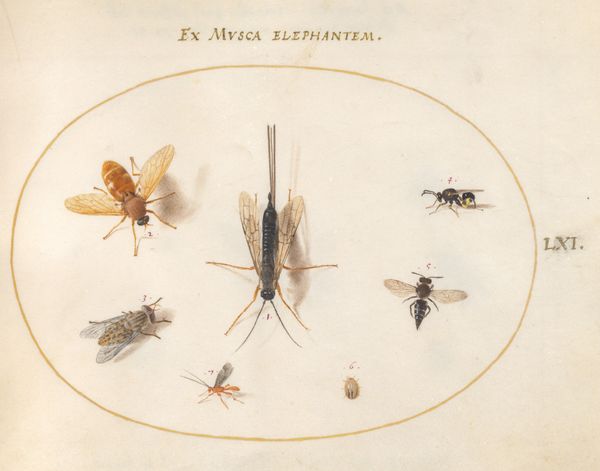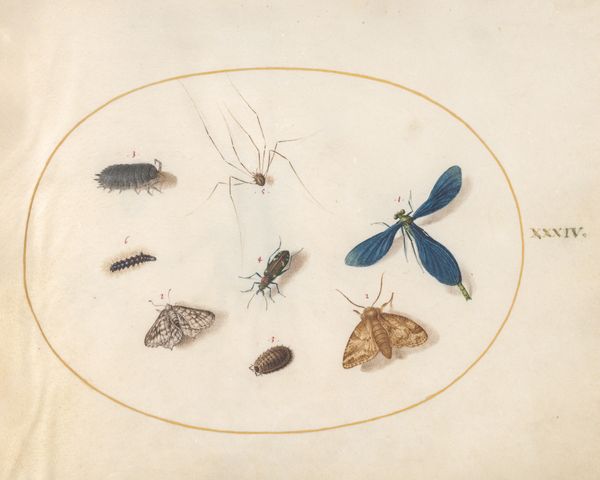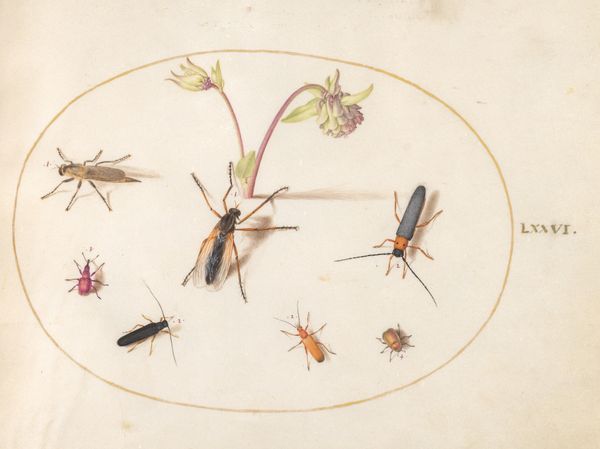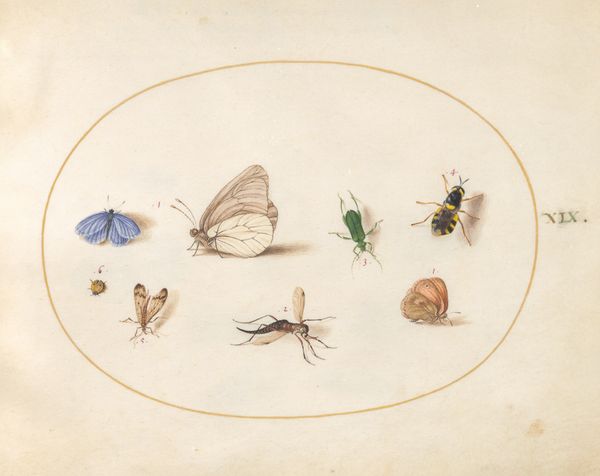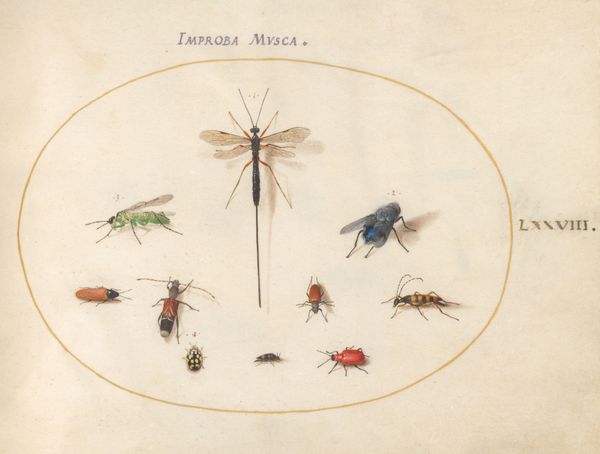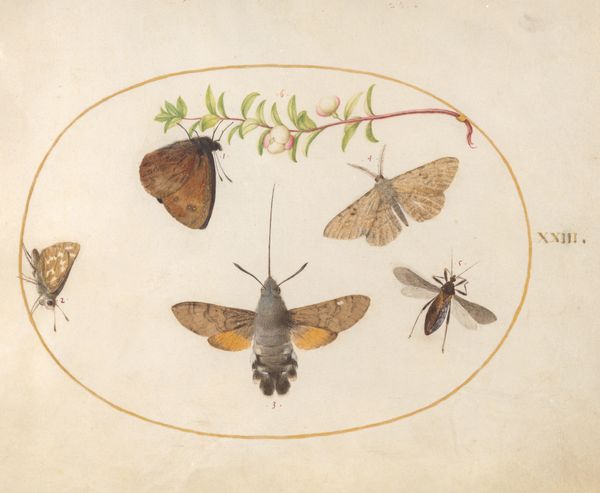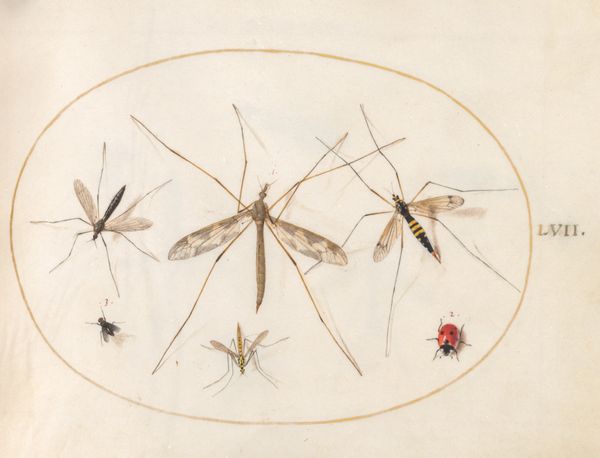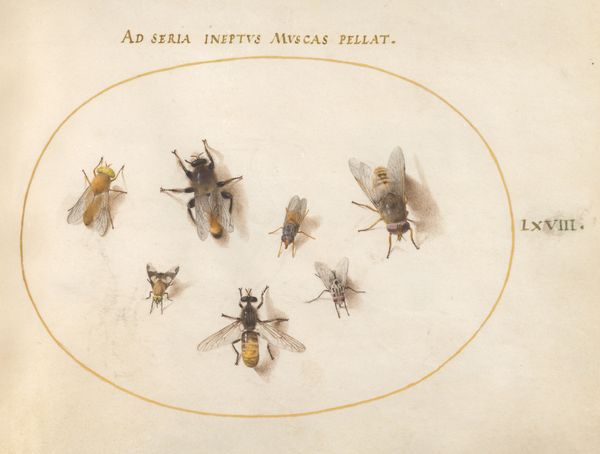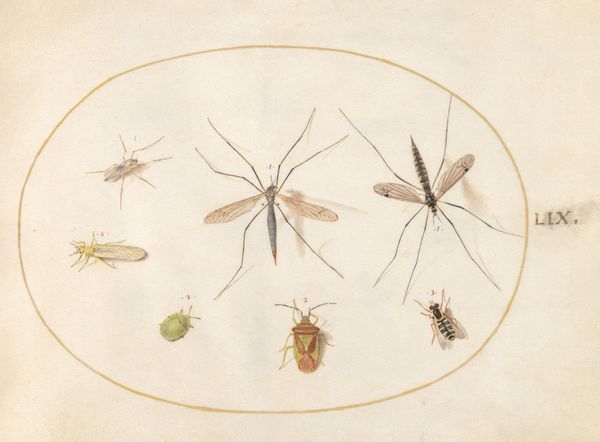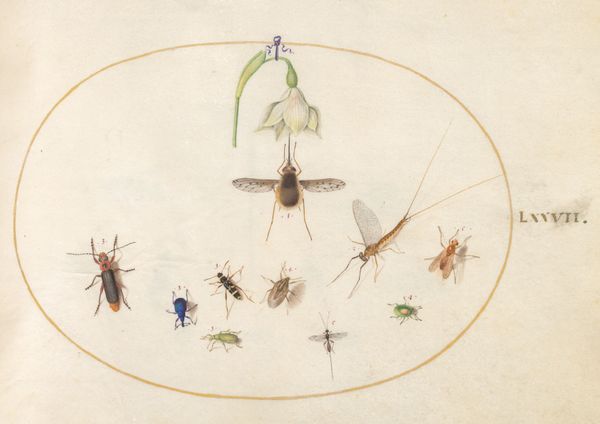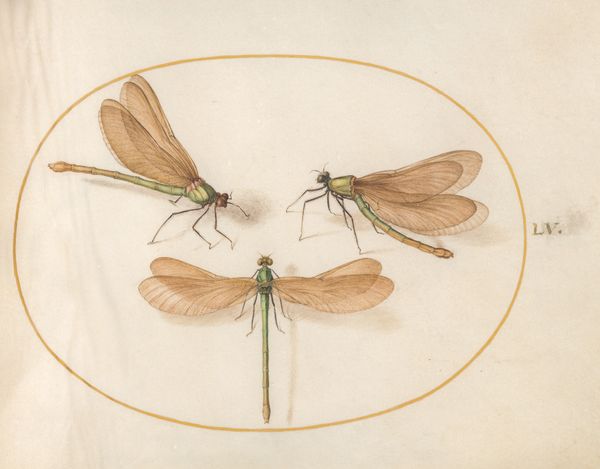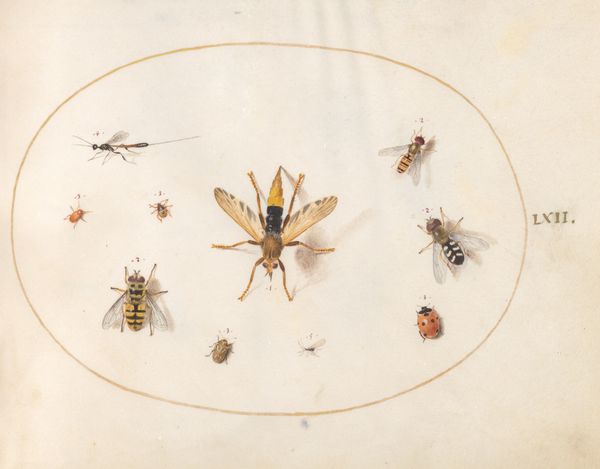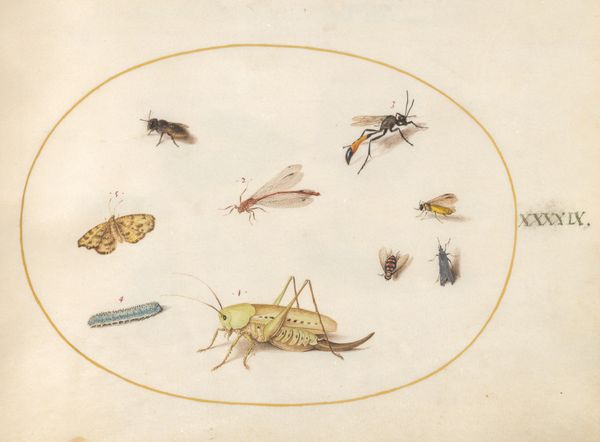
Plate 47: A Dragonfly (Banded Darter?), Grasshopper, Houseflies, a Carrion Beetle, a Flower Longhorn Beetle, and Other Insects c. 1575 - 1580
0:00
0:00
drawing, painting, watercolor
#
drawing
#
water colours
#
painting
#
11_renaissance
#
watercolor
#
botanical art
Dimensions: page size (approximate): 14.3 x 18.4 cm (5 5/8 x 7 1/4 in.)
Copyright: National Gallery of Art: CC0 1.0
Curator: Joris Hoefnagel’s *Plate 47: A Dragonfly (Banded Darter?), Grasshopper, Houseflies, a Carrion Beetle, a Flower Longhorn Beetle, and Other Insects*, made circa 1575-1580, presents a wonderfully concentrated display of insect life rendered in watercolor. What's your initial take? Editor: Well, it gives me the uncanny feeling of being scrutinized by these various insects. Their presence feels undeniably…confrontational, almost a challenge to our sense of human dominance in the world. Curator: I agree. Technically, the composition arranges each insect within a carefully considered ovoid space, achieving an effect of equilibrium and systematic cataloging typical for the Renaissance, yet the texture feels meticulously realistic in spite of that ordering. Editor: True, though it also underscores how scientific documentation during this period reflected not only objective observation but also underlying cultural anxieties and power structures. Each insect, though meticulously rendered, feels placed under our surveillance. Aren’t these some of the very creatures which were then and now, are harbingers of disease? Vectors of it? Curator: Certainly the contrast in scale between the insects gives them heightened visual impact, but let's consider the precision in his representation of the chitinous exoskeleton of the Carrion Beetle versus the translucent wings of the Dragonfly. Editor: Precision granted! But I cannot look past the context. Europe in the 16th century witnessed emergent scientific advancement and the start of its colonial expansion, right? The power to classify and study nature then enabled exploitation, resource extraction, even justifications of slavery and racial discrimination based on pseudo-scientific taxonomies. Curator: Yes, scientific illustrations and engravings provided ways for scholars to analyze nature. Note Hoefnagel's skillful use of watercolor to mimic texture: see how the stippling effect of the dragonfly's wings plays off the solidity of the grasshopper's abdomen. Editor: And the title itself, by listing a whole ecosystem, hints at the intersectionality that the era lacked – that all creatures in our ecosystems are linked. As a whole, it's as if Hoefnagel foreshadowed an environmental awareness centuries ahead of his time. Curator: Fair. Seen together, Hoefnagel’s series invites reflection on art and scientific inquiry during an age of accelerating global encounters. Editor: Indeed, the image and the way it was generated speaks as clearly to the present day and even its technological frameworks.
Comments
No comments
Be the first to comment and join the conversation on the ultimate creative platform.
